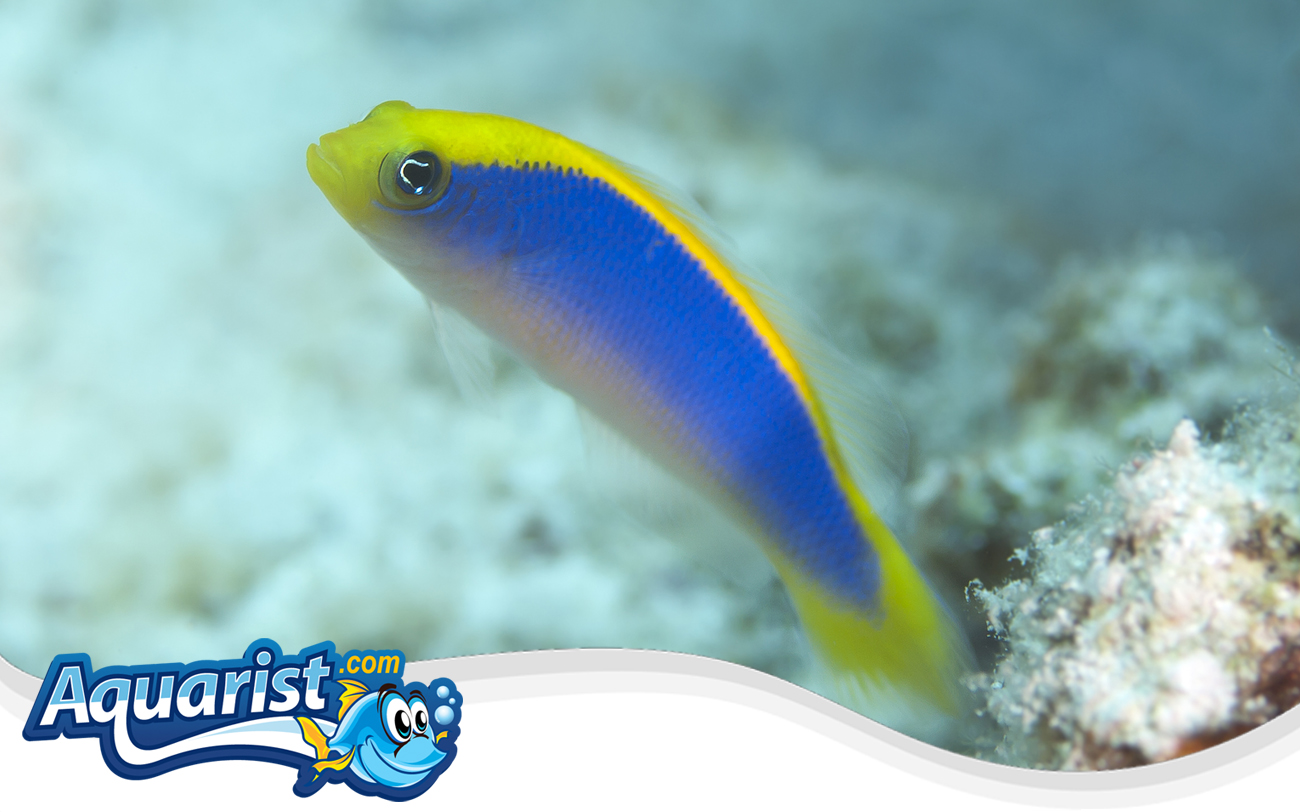Overview
- Native to the Red Sea, typically found inhabiting coral reefs and rocky areas.
- Distinctive bright coloration featuring a vibrant blue body with a striking yellow-orange head and dorsal region.
- Known for its bold personality and territorial behavior, ideal for experienced marine aquarists.
- Popular for its stunning colors and active presence, making it a standout addition to marine aquariums.
Feeding
- Carnivorous; naturally preys on small crustaceans, worms, and zooplankton.
- Accepts a varied diet including mysis shrimp, brine shrimp, finely chopped seafood, and high-quality marine pellets or flakes.
- Multiple small daily feedings recommended to support optimal health and coloration.
- A diverse diet is essential for nutritional balance and vitality.
Habitat
- Requires a moderately sized aquarium (minimum 30 gallons) with plenty of structured live rock formations and hiding places.
- Stable and mature aquarium conditions essential for long-term success.
- Ample caves, crevices, and hiding spots help replicate natural habitat and manage aggression.
- Moderate water circulation and effective filtration are necessary for maintaining optimal water quality.
Fish Care
- Optimal water temperature: 72-78°F (22-26°C).
- Recommended pH: 8.1-8.4; specific gravity: 1.020-1.025.
- Generally hardy but sensitive to sudden changes; regular water testing and careful maintenance required.
- Monitor closely for signs of marine diseases and parasites; prompt action ensures best health outcomes.
Compatibility
- Semi-aggressive; best suited for tanks with similarly sized or larger, robust fish.
- Reef-safe with caution; may prey on small ornamental shrimp and other invertebrates.
- Recommended tank mates include larger clownfish, dwarf angelfish, tangs, and other semi-aggressive marine species.
- Typically territorial; best kept singly unless provided ample space in larger aquariums.
Aquarium Behavior
- Highly active, frequently seen exploring and defending territory.
- Can display aggression towards similarly sized fish or other dottybacks.
- Ample hiding spaces and clearly defined territories help reduce aggression.
- Interactive behavior; often engages actively with aquarium caretakers during feeding.


